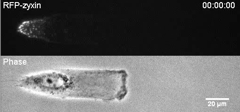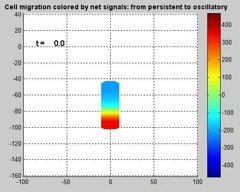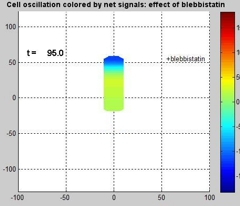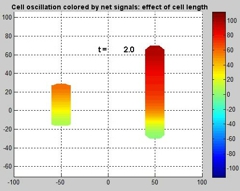| Overview | Cell Structures | Cell Migration | Cell Division |
Stabilization of Migration Polarity by Microtubules |
Zhang et al. , Proc. Natl. Acad. Sci. USA 111:16383-16388 (2014) |
Establishment of migration polarity requires the formation of distinct regions of front and rear, which in turn involves coordination over the cell length. We have shown with computer modeling |
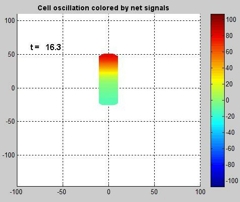 |
Modeling of Nocodazole-Induced Oscillation at Steady State |
|


